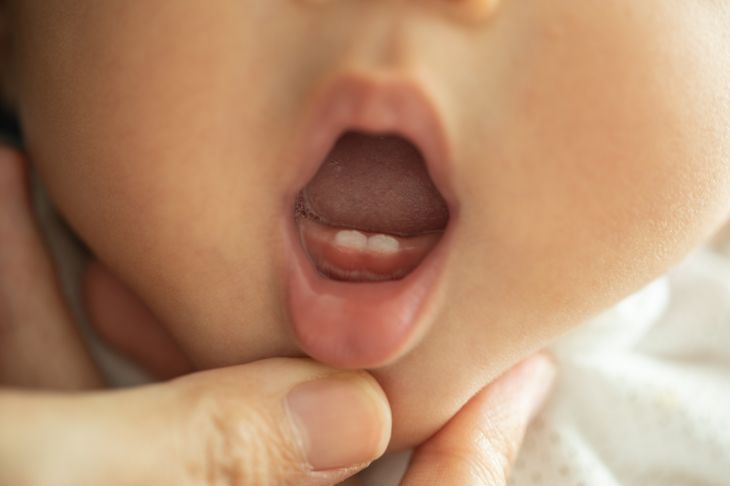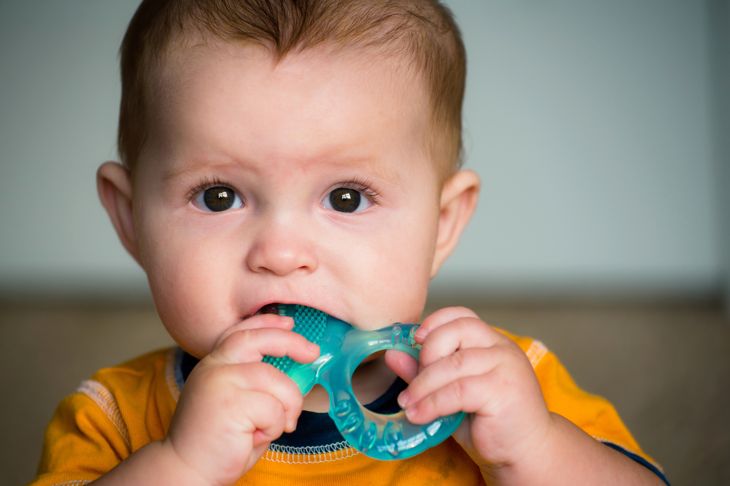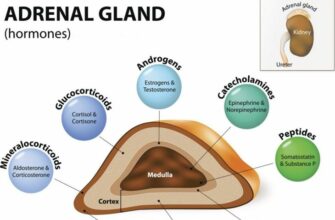Teething can be a very uncomfortable experience for babies. If, as parents, we learn what to expect and ways to alleviate the teething pain, the whole process can be a little bit easier. The American Dental Association recommends the first visit to the dentist no later than your child’s first birthday.
The Primary Teeth
Twenty primary or “milk” teeth are already in every baby’s jaw at birth. They start to erupt — to break through the gums — between six and 12 months of age.By age three, most children have a full set of primary teeth. These teeth look whiter than future permanent teeth because they have thinner enamel. The roots of the teeth, and the teeth themselves, are also shorter than permanent teeth.
Four to Six Months
Before teeth erupt, your baby’s gums will likely become inflamed, red, and painful. As a result, your child will probably be fussy and look uncomfortable. They also tend to drool more and chew on hard objects.Female babies tend to get their teeth before males do. The first to emerge, especially incisors, break through in pairs, on the left and right. Molars tend to form on one side before they erupt on the other side.
Six to 16 Months: The Incisors
By this age, your baby already has a few teeth. The lower central incisors — at the front of the mouth — typically erupt between six and 10 months. The upper incisors come in between eight months and one year. Your child will then lose these teeth around age six.Upper lateral incisors come in between months nine and 13, the lower ones between 10 and 16 months. By the time the child is seven or eight, they will have lost these “baby” teeth as well. The permanent incisors erupt around seven and nine years of age.
Nine to 16 Months: The First Molars
The molar teeth are those at the back of the mouth. They vary in shape and size, and one of their key roles is to grind the food.The upper first molars erupt between 13 and 19 months, and the lower between 14 and 18. Both upper and lower molars are typically shed between nine and 11, when the permanent or “adult” molars start to come in.
to 23 Months: The Canines
Also known as cuspids, the canine teeth are located between the incisors and the molars and play a key role in maintaining the dental structure.The upper canines emerge around 16 to 22 months and fall out around age 11. The lower canines come in in the months before the child’s second birthday as well.
to 33 Months: The Second Molars
The upper second molars emerge around 25 to 33 months of age and the lower ones between 23 and 31 months. Most kids lose these teeth around 12 or 13.
Projected Timeline For Teething
Similar to other milestones, there is a projected timeline for teething. It should be used as a guideline because every baby is unique, however — getting or losing teeth earlier or later is not necessarily cause for concern.
Tips To Deal With Teething Pain
Rubbing your baby’s gums gently or giving them a frozen teething ring or cold carrot stick can temporarily alleviate pain and discomfort. Parents need to discuss with a doctor or pharmacist any medication, including topical painkillers, before giving these to babies and toddlers. For example, drugs that contain benzocaine or lidocaine should be avoided.
Permanent Teeth
The permanent teeth start to replace the primary teeth around age six or seven. By the time children become adolescents, most of them will have only permanent teeth. Permanent teeth are bigger, stronger, have longer roots, and the enamel is more calcified and therefore thicker.
To 21 Years: The Third Molars
Just like wisdom, the third molars — the wisdom teeth — come with age. These erupt around 17 to 21 years. While most people will have one to four wisdom teeth, some do not get any. The dentist may recommend the removal of wisdom teeth if there are signs of pain, infections, damage to neighboring teeth, gum diseases, or if the patient needs braces or other treatments.In total, most adults have 32 permanent teeth when all is said and done: eight incisors, four canines, eight premolars, and 12 molars (including four wisdom teeth).

 Home
Home Health
Health Diet & Nutrition
Diet & Nutrition Living Well
Living Well More
More




















